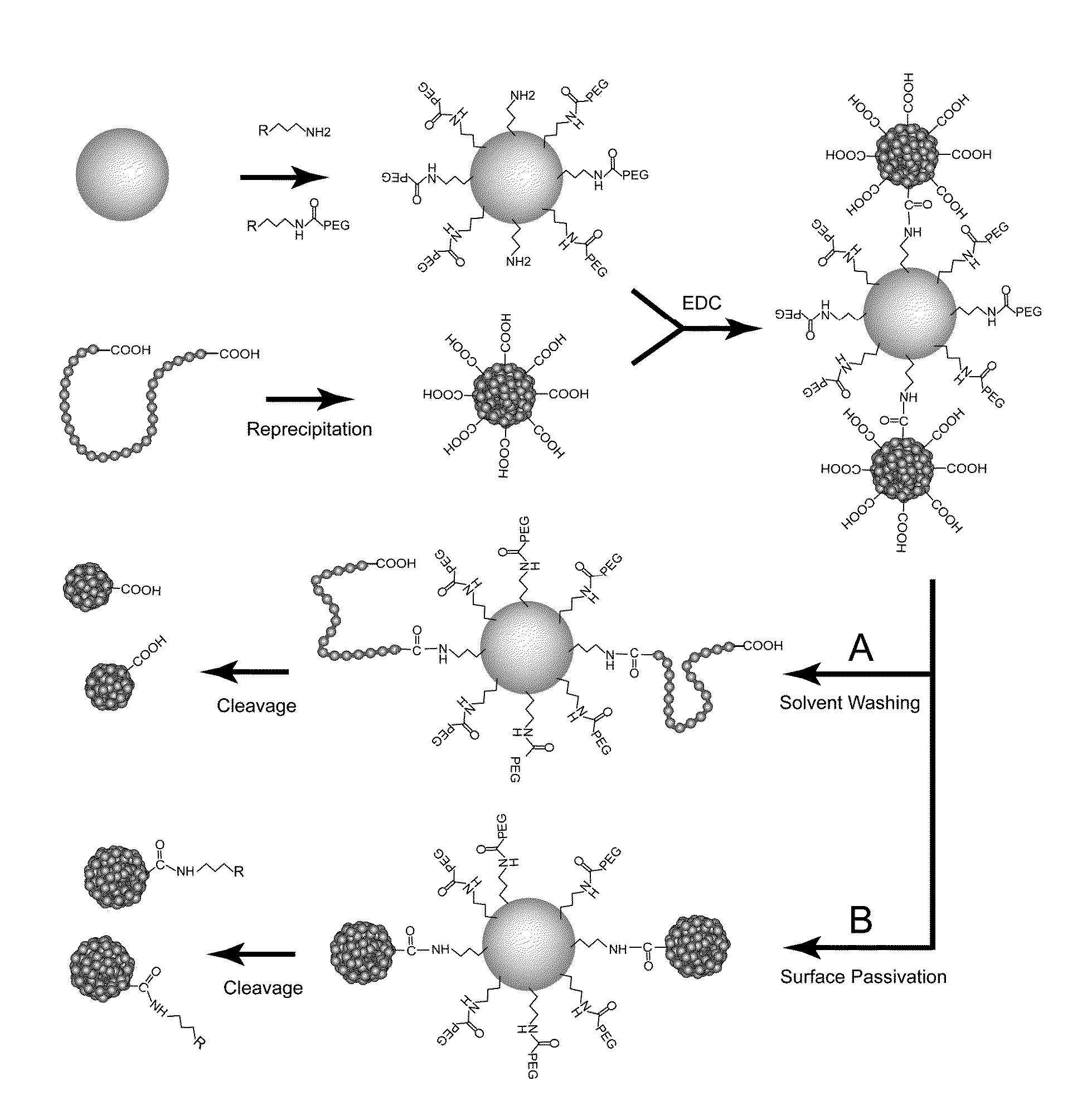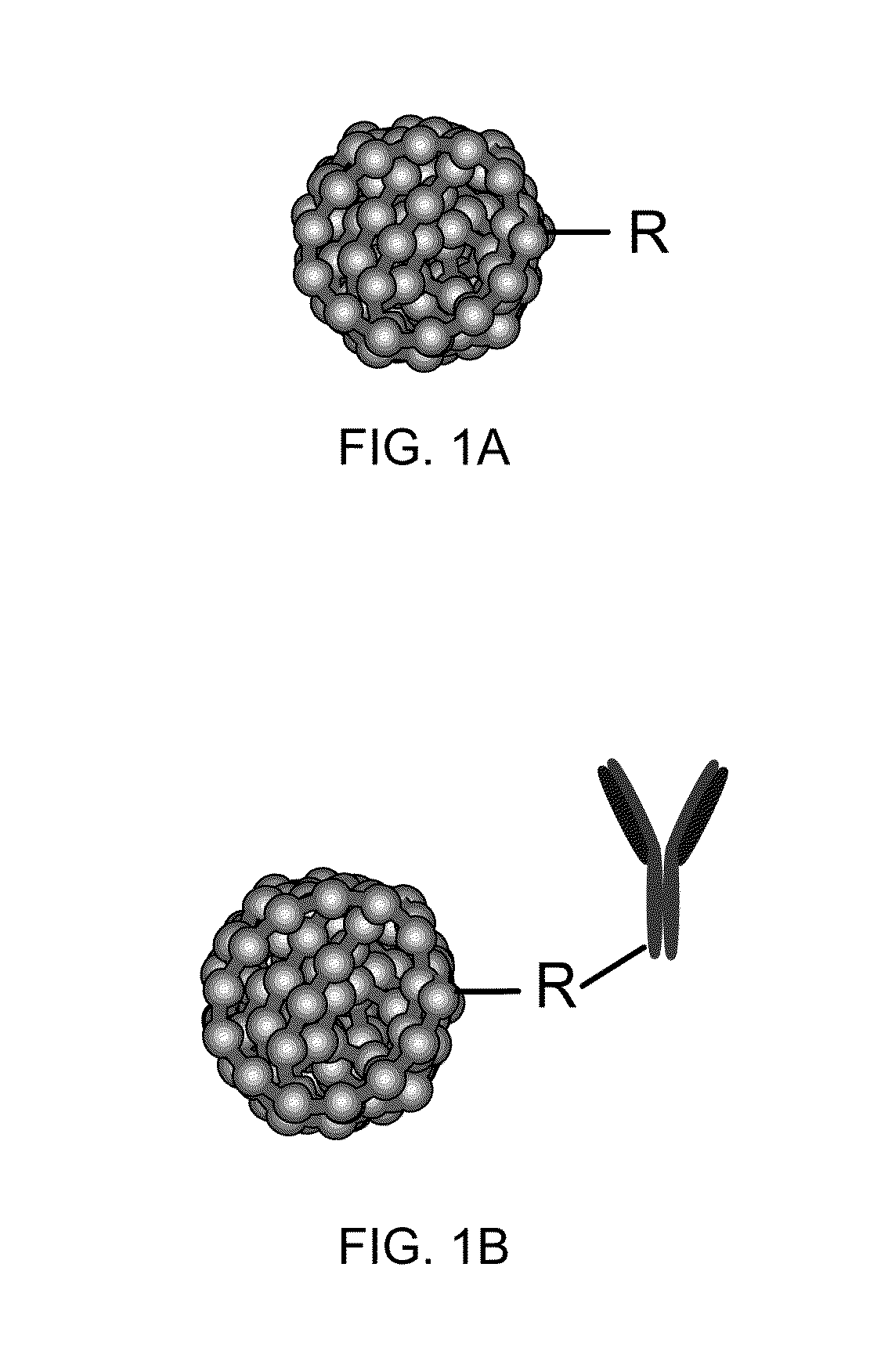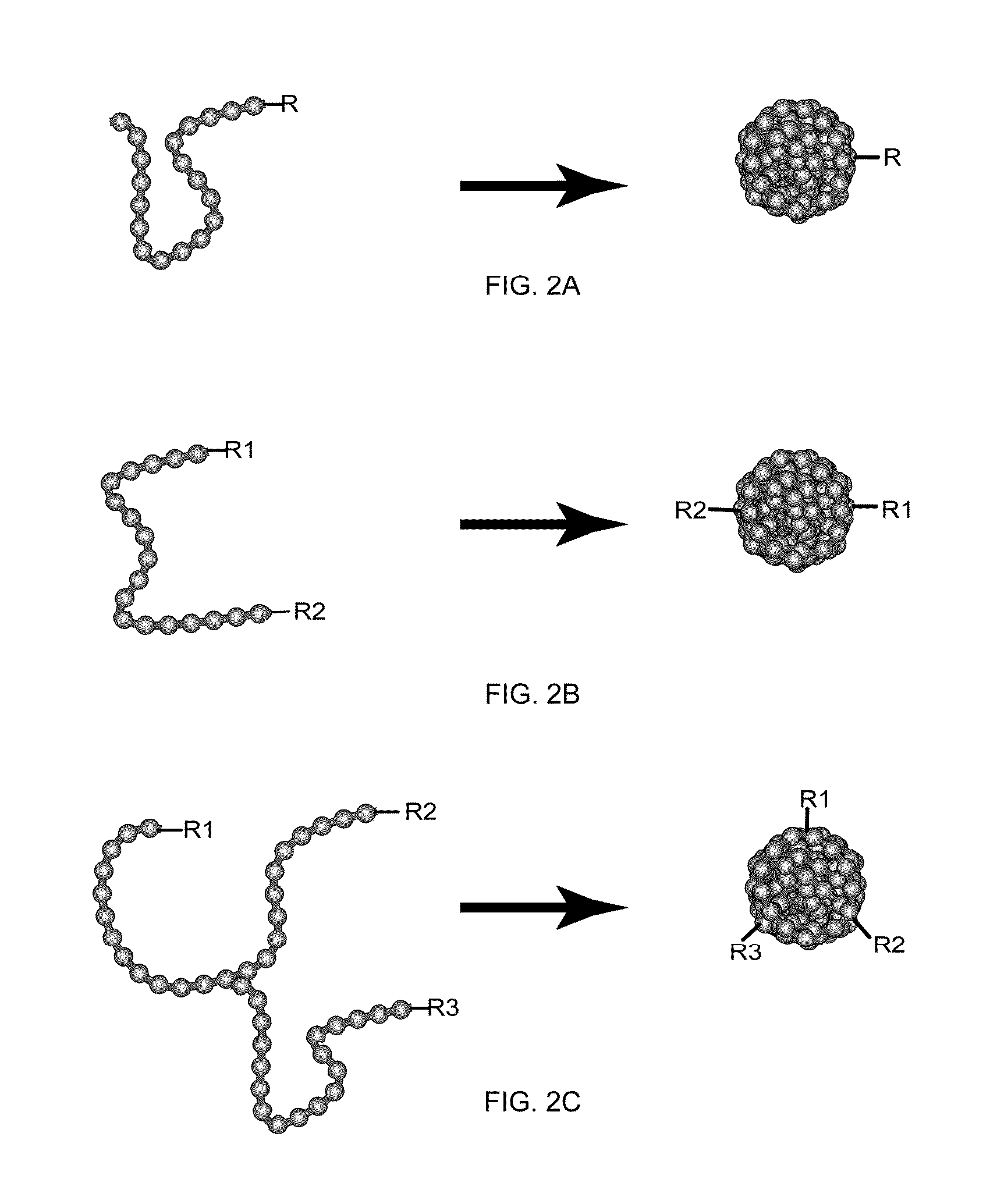Chromophoric polymer dots
a polymer and chromophoric technology, applied in the field of chromophoric polymer dots, can solve the problems of low absorption and poor photostability, great difficulty in further development of high-sensitivity imaging techniques and high, and great bottleneck in nanoparticle development, controlled chemical functionalization, etc., to achieve good performance, good performance, and good performance.
- Summary
- Abstract
- Description
- Claims
- Application Information
AI Technical Summary
Benefits of technology
Problems solved by technology
Method used
Image
Examples
example 1
Method for Preparing Functionalized Chromophoric Polymer Dots
[0120]The present example provides a method for obtaining functionalized chromophoric polymer dots for subsequent characterization and modification to monovalent chromophoric polymer dots. FIG. 3 shows chemical structures of two typical chromophoric polymers: polyfluorene terminated with carboxyl functional groups (PDHF—COOH) and polyfluorene-benzothiadiazole without functional groups (PFBT) for preparing the functionalized chromophoric polymer dots. Functionalized chromophoric polymer dots in aqueous solution are prepared as follows. First, a chromophoric polymer, for example PDHF—COOH, was dissolved in tetrahydrofuran (THF) by stirring under inert atmosphere to make a stock solution with a concentration of 0.1 mg / mL. A 5 mL quantity of the solution mixture was added quickly to 10 mL of deionized water while sonicating the mixture. The THF was removed by nitrogen stripping, and the solution was concentrated by continuous ...
example 2
Method for Preparing Monovalent Single-Molecule Chromophoric Polymer Dots from Multivalent Polymer Dots
[0121]The multivalent chromophoric polymer dots prepared in accordance with the above method of the present invention were modified to monovalent chromophoric polymer dots. Scheme A in FIG. 4 shows a schematic diagram for preparing monovalent single-molecule chromophoric polymer dots via an engineered particle surface. Silica colloidal beads were used in this example to provide an amine functionalized surface. But any other beads such as polymer beads, metal beads or inorganic beads can also be used. Silica colloidal particles of ˜200 nm were prepared by the traditional Stöber method. 100 μA of acetic acid was added to a solution of 100 mg silica particles in 5 mL MilliQ water, and magnetically stirred. Then a mixture of 10 μA of aminopropyltrimethoxysilane (APTMS) and 100 μA of Methoxy(polyethylenoxy)propyltrimethoxysilane (PEG-silane) was added to the solution, and the reaction l...
example 3
Optical Characterization of the Formation of Monovalent Chromophoric Polymer Dots
[0122]The formation of monovalent chromophoric polymer dots prepared in accordance with the method of the present invention was assessed by investigating the spectral properties and intra-particle energy transfer in blended polymer dots. UV-Vis absorption spectra were recorded with DU 720 spectrophotometer using 1 cm quartz cuvettes. Fluorescence spectra were collected with a Fluorolog-3 fluorometer using a 1 cm quartz cuvette. First, blended chromophoric polymer dots containing the same weight concentration of blue-emitting PDHF—COOH and yellow emitting PFBT polymers (chemical structures shown in FIG. 3) were prepared according to the method in Example 1. The resulting PFBT / PDHF—COOH particles have multiple carboxyl groups on surface, which can be used to conjugate with amine-functionalized silica beads. The blended polymer dots show both absorption peaks from PDHF (380 nm) and PFBT (460 nm) in the abs...
PUM
| Property | Measurement | Unit |
|---|---|---|
| fluorescence quantum yields | aaaaa | aaaaa |
| excitation wavelength | aaaaa | aaaaa |
| median diameter | aaaaa | aaaaa |
Abstract
Description
Claims
Application Information
 Login to View More
Login to View More - R&D
- Intellectual Property
- Life Sciences
- Materials
- Tech Scout
- Unparalleled Data Quality
- Higher Quality Content
- 60% Fewer Hallucinations
Browse by: Latest US Patents, China's latest patents, Technical Efficacy Thesaurus, Application Domain, Technology Topic, Popular Technical Reports.
© 2025 PatSnap. All rights reserved.Legal|Privacy policy|Modern Slavery Act Transparency Statement|Sitemap|About US| Contact US: help@patsnap.com



